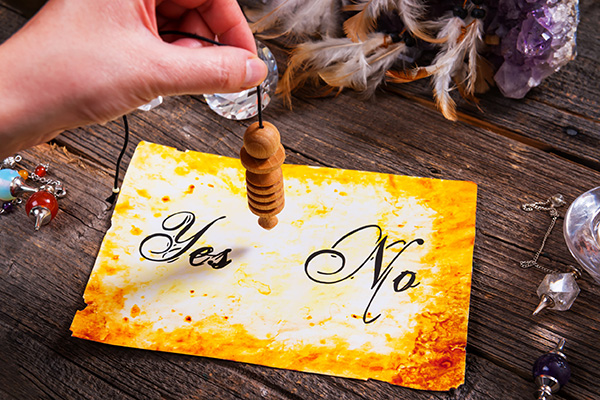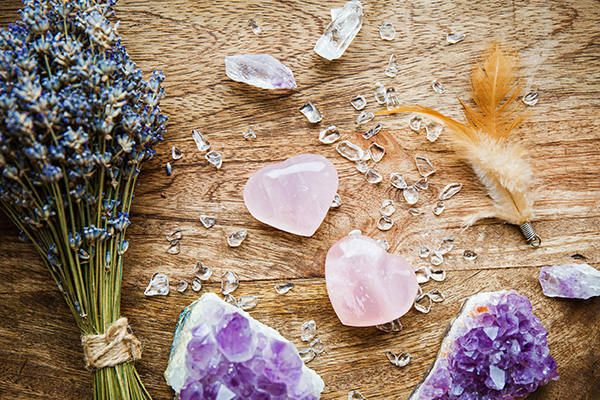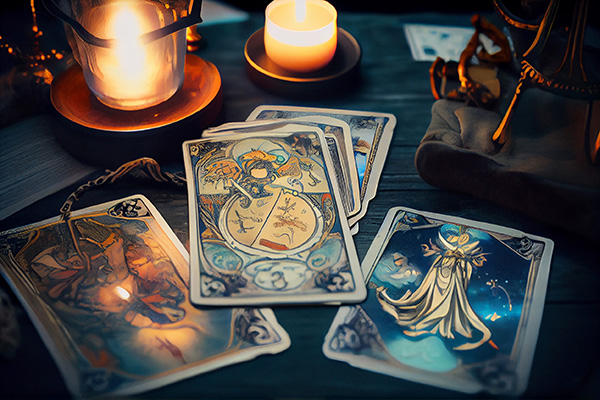What to expect during your first psychic reading
 Experiencing a psychic reading for the first time can be thrilling but also somewhat daunting or even anxiety-inducing. You might feel a range of emotions such as curiosity, eagerness, apprehension, and perhaps even doubt. All of this is entirely normal!
Experiencing a psychic reading for the first time can be thrilling but also somewhat daunting or even anxiety-inducing. You might feel a range of emotions such as curiosity, eagerness, apprehension, and perhaps even doubt. All of this is entirely normal!
If you’re uncertain about what to anticipate, how to get ready, or what questions to pose, we’re here to assist you. At Psychic Access, we recognize the array of feelings that come along with your initial session.
This is precisely why we’ve put together this guide to help you feel more ready, empowered, and open to the insights that lie ahead. Your inaugural reading is an intensely personal experience, and we’re dedicated to making it empowering, enlightening, and transformative.
The initial step to having a significant reading is understanding your reasons for seeking one. What is your aim or intention? What drives you to seek a reading?
Are you looking for clarity on a romantic relationship or your love life? Do you seek insight regarding your job, business, or finances? Do you desire spiritual direction concerning your path or purpose? Or are you simply inquisitive?
A session with a skilled psychic or medium can be a profound, transformative experience. Clarifying your intention establishes the energetic tone of your session and serves as a basis for meaningful guidance.
Take a moment to ground yourself and reflect, “What do I aspire to achieve from this reading?” Having a defined purpose allows spirit to shape the reading according to your highest good.
Preparation in life is crucial. Luck occurs when preparedness meets opportunity. Opportunities surround us ~ Earl Nightingale
Selecting The Appropriate Psychic
Every psychic possesses distinct talents, areas of focus, and approaches to providing guidance and insights. Do you require a medium to connect with loved ones in the spiritual realm? Are you encountering relationship challenges or professional obstacles? It’s vital to choose the right reader for your needs.
At Psychic Access, we simplify the process of finding your perfect match. On our website, you can explore detailed profiles of our psychic advisors, view their introductory videos, and read their feedback to understand each reader’s style.
Trust your instinct when selecting a reader. Remember, you’re not searching for the “best” psychic overall—you’re looking for the ideal fit for you. Choose someone who feels instantly right or with whom you sense a positive rapport.
Keep in mind that your initial six-minute reading is complimentary, so you can explore your first choice without any risk.
Prepare Your Inquiries
It’s beneficial to come with a clear intention and specific inquiries to maximize your time with the psychic. However, refrain from being overly rigid with a checklist. Often, the most impactful readings are those where the spirit reveals what truly needs attention. Concentrate on one or two focused questions instead of overwhelming the session with many concerns and topics.
More importantly, consider how you frame your questions. To get the most from a reading, it is best to steer clear of “fortune-telling” inquiries, as they limit the guidance you can receive and often diminish your sense of empowerment and the ability to successfully achieve your goals and desires.
Rather than asking, “Will I encounter my soulmate soon?” consider asking: “What actions can I take to invite a healthy, loving relationship into my life?” This empowers you to take an active role in shaping your future instead of passively waiting. Otherwise, you might find yourself waiting your entire life because you didn’t take the necessary steps or make the desired changes to attract enduring love.
Whether guidance appears during times of peace or chaos, it is your responsibility to have the bravery to recognize it ~ Caroline Myss
Be Open, Present & Receptive
The quality of your reading will depend on your mindset and energy frequency. Prior to your first reading, locate a quiet, comfortable space where interruptions are unlikely. Take some deep breaths to ground yourself. Achieving a state of calm and centeredness contributes to creating a clear channel for spirit to communicate with the psychic.
Regarding openness: rigid expectations, skepticism, and attempts to “test” the psychic can hinder the reading. An excessively analytical, closed-off, or negative attitude disrupts the energy flow and complicates the psychic’s ability to access your vibration clearly. Psychic readings are not about proving something; they center on connection, trust, and spiritual resonance.
Approach the session with curiosity, trust, and a readiness to receive. You don’t have to instantly agree with everything, but maintaining an open mindset allows spirit to convey messages through the reading. Release control, set aside judgment, and surrender to the experience with an open heart. When you do, spirit will collaborate with you, and the messages you receive will be more aligned, accurate, and significant.
Don’t forget to jot down notes or record the session. Our psychics often deliver a great deal of information in a brief time, and some of the most valuable insights may not become clear until later. At Psychic Access, we offer a free session recording feature enabling you to revisit your reading for up to 90 days and listen at your leisure. Frequently, what seems unclear in the moment gains much more meaning through reflection.
When we remain open to Divine Guidance, we shall receive it… It will come to us in various forms—but it will come ~ Julia Cameron
Allow Spirit To Lead The Path
At Psychic Access, we provide spirit-guided psychic readings. Our talented team of readers receives loving messages specifically for you to help you discover the answers you’ve been searching for and illuminate your way forward. Our readers do not dictate the messages or guidance received from your loved ones, spirit guides, angels, the Source, or the Universe.
Sometimes, spirit may have priorities that differ from ours. For instance, you might desire to focus on a new romantic interest, but your reading could highlight the importance of healing past wounds or addressing a stagnant relationship. Maintain an open mind — these unexpected insights often hold the key to your deeper healing and progress.
At Psychic Access, we prioritize integrity in every session. Our psychics and mediums faithfully convey any insights from spirit as they arise. They are skilled and experienced in delivering spiritual guidance and insights with kindness, honesty, and respect. Even if the guidance challenges your expectations, trust that it is provided for your benefit.
Ponder, Integrate & Act
The transformative power of a reading does not cease when the call concludes. Later, take time to reflect on the messages you have received. Review your notes, journal your emotions, and assess how the guidance corresponds to your current path. Are there actions you can take? Are you prompted towards healing, closure, or growth?
Bear in mind, psychic insight is only as potent and life-altering as your application of it. With the assistance of spirit, our readers offer guidance and maps, but you are the one traversing the journey.
|
Receive daily doses of psychic wisdom and spiritual inspiration from our talented team of psychic advisors at PsychicAccess.com. We post a new blog article every day on our official blog site at PsychicBloggers.com. All articles are crafted specifically for your enlightenment and personal development by one of our gifted team of professional psychics. We are devoted to sharing our knowledge and experiences and strive to keep you informed with the latest information on psychic phenomena, divination, metaphysics, energy work, spiritual life design, the paranormal, and esoteric practices. If you’re new to the Psychic Access community, your first reading with us is FREE with any available psychic of your choice. Yes, we are that confident you will enjoy our services! Join us now at PsychicAccess.com. |
Embarking on a psychic reading for the first time can evoke a blend of excitement and apprehension. You may find yourself contemplating what to anticipate and how to adequately prepare for your session. Here are some key points to consider as you navigate this spiritual journey.
Primarily, it’s essential to engage your psychic reading with an open heart and a positive mindset. Remember that the psychic’s role is to support you and offer insights into your life, so strive to remain receptive to the messages they deliver.
During your inaugural psychic reading, your psychic may employ various tools and techniques to connect with your energy and offer guidance. This could involve tarot cards, crystals, astrology, or simply relying on their intuition. Don’t hesitate to pose questions or seek clarification if any aspect is unclear to you.
It’s also vital to recognize that not every psychic will deliver the answers you seek. Every psychic boasts unique abilities and specializations, so it’s crucial to find someone who resonates with you and your specific needs. Trust your gut instinct and select a psychic that you feel comfortable around.
Throughout your reading, the psychic may illuminate aspects of your past, present, and future. They might also provide insights into relationships, career paths, health, or any other areas of your life where you’re seeking clarity. Keep in mind that the future is not predetermined, and the insights shared during your reading are meant to empower you to initiate positive transformations in your life.
Post-reading, take some time to contemplate the messages you received and how they resonate with your personal experience. Trust your intuition and take the guidance to heart. Remember that the psychic’s role is to help you navigate life’s hurdles and furnish you with the tools necessary for crafting a brighter future.
In summary, experiencing a psychic reading for the first time can be a significant and transformative event. By welcoming your reading with an open heart and a constructive attitude, you can gain invaluable insights and guidance that will assist you in your spiritual development. Trust in the process and remain receptive to the messages that emerge during your reading. You may just uncover a fresh sense of clarity and purpose that helps you tackle life’s challenges with confidence and grace. Continue reading














